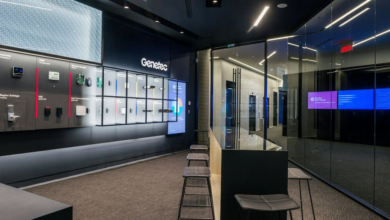GSA’s New Multi-Cloud & Hybrid Cloud Guide Helps Agencies Make Better Decisions About Cloud Architecture


GSA’s New Multi-Cloud & Hybrid Cloud Guide Helps Agencies Make Better Decisions About Cloud Architecture
As cloud computing environments expand and become more diverse, agencies face an ever-growing number of cloud services, offerings and options. Agencies need informed strategies to understand, anticipate, rationalize and optimize major cloud architecture decisions.
Key considerations center around if and how agencies integrate on-premises infrastructure into their cloud environments. To facilitate the decision process, the GSA Data Center and Cloud Optimization Initiative Program Management Office (DCCOI PMO) is pleased to announce the release of the Multi-Cloud and Hybrid Cloud Guide, developed in collaboration with the Cloud and Infrastructure Community of Practice (C&I CoP).
This guide is another example of GSA’s commitment to creating simple, user-friendly information and resources to help federal agencies use technology to meet their missions in an effective and efficient way. For example:
This guide brings together the most relevant information on different cloud architectures, compares the advantages and disadvantages of each, and walks agencies through important considerations pertaining to an Infrastructure as a Service (IaaS) cloud solution.
What is multi-cloud architecture? How does it differ from hybrid cloud architecture?
Multi-cloud architecture is the deliberate integration of services from multiple IaaS Cloud Service Providers (CSPs). A collection of cloud services that serve an enterprise but were created on an ad-hoc or patchwork basis isn’t considered a true multi-cloud architecture.
Hybrid cloud architecture is the deliberate integration of public cloud, private cloud, and on-premises infrastructure. Though it’s often mentioned as a form of multi-cloud, multi-cloud doesn’t use on-premises IT infrastructure.
These definitions help clarify terms that are used inconsistently in information technology (IT).
Why choose one over the other?
The decision to adopt a multi-cloud or hybrid cloud solution significantly impacts cost effectiveness, manageability, performance, reliability, security and privacy, and the IT workforce. Agencies should be aware of the relative benefits and tradeoffs of each.
- Cost effectiveness: A pure cloud architecture (i.e., multi-cloud architecture) can scale entirely according to demand and, thus, agencies only pay for resources when there’s demand. Cloud Management Platforms (CMPs) can help to apply cost optimization techniques. Meanwhile, in hybrid cloud architecture, agencies can keep legacy applications on-premises and avoid the often-costly process of migrating them to the cloud.
- Manageability: While CMPs offer streamlined management of multi-cloud architecture, management of on-premises infrastructure along with IaaS can still pose interoperability and standardization challenges.
- Performance: Hybrid cloud architecture can suffer from latency issues when there’s a performance mismatch between on-premises infrastructure, private cloud, and public cloud. In contrast, multi-cloud architecture can leverage horizontal and vertical scaling from public CSPs, and can offer high availability for production applications.
- Reliability: Use of redundant multi-cloud or hybrid cloud architecture offers a high degree of reliability. Notably, an on-premises data center would require substantial resource investments in building and maintenance to match the reliability of a public CSP.
- Security and privacy: Multi-cloud security infrastructure is typically easier to manage, is cheaper, provides many features, and is shared with best-in-class CSPs. However, hybrid cloud security infrastructure requires a decentralized approach to enterprise security, which means additional applications, monitoring, time-to-value, and cost.
- Workforce requirements: Increased hiring and training efforts are needed to manage the greater complexity of multi-cloud and hybrid cloud architectures. For the former, training efforts may be facilitated through well-integrated CMPs. For the latter, an IT workforce familiar with each agency’s on-premises infrastructure may be receptive to leverage cloud technologies.
Though these are just some of the considerations in the guide, agencies will likely arrive at additional considerations to determine which IaaS cloud solution is more appropriate. This is an important part of the guide’s intent: a one-size-fits-all solution isn’t appropriate for the varying IT environments across the federal community.
Instead, it aims to point agencies in the right direction, according to their specific IT needs.
Join our Community of Practice!
This guide is iterative and agencies are encouraged to collaborate, share best practices, and lessons learned. Subscribe to the C&I CoP to learn more about containers and cloud computing.



